There are currently no fully proven medication-based options available to help people addicted to cocaine recover in treatment programs. Researchers and doctors have devoted a considerable amount of time to addressing this lack by either searching for new options or adapting existing medications to treat cocaine addiction. In a study published in April 2014 in The Journal of Neuroscience, researchers from three U.S. institutions explored the potential role of a medication called baclofen (usually prescribed to ease certain forms of severe muscle spasming) in helping recovering cocaine addicts avoid experiencing a drug relapse.
Can Medication Help Cocaine Addiction?
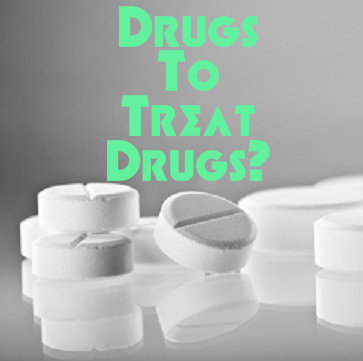 Researchers across the U.S. are investigating the potential usefulness of a number of existing medications as treatments for people affected by cocaine addiction. Medications currently being studied directly in human beings include disulfiram (Antabuse), normally used in alcoholism treatment; modafinil (Provigil), typically used in the treatment of sleep apnea or narcolepsy; and topiramate (Topamax), normally used to control seizure activity and previously adapted for alcoholism treatment. The National Institute on Drug Abuse (NIDA) reports that the most consistent positive results have come from disulfiram. In addition to these adapted medications, some researchers are exploring the possibility of developing a cocaine vaccine that could prevent the drug from producing its characteristic mind-altering effects.
Researchers across the U.S. are investigating the potential usefulness of a number of existing medications as treatments for people affected by cocaine addiction. Medications currently being studied directly in human beings include disulfiram (Antabuse), normally used in alcoholism treatment; modafinil (Provigil), typically used in the treatment of sleep apnea or narcolepsy; and topiramate (Topamax), normally used to control seizure activity and previously adapted for alcoholism treatment. The National Institute on Drug Abuse (NIDA) reports that the most consistent positive results have come from disulfiram. In addition to these adapted medications, some researchers are exploring the possibility of developing a cocaine vaccine that could prevent the drug from producing its characteristic mind-altering effects.
In the absence of proven medications, most cocaine treatment programs rely on behavioral therapies that achieve their beneficial effects by helping recovering addicts change the ways in which they think and react in the presence of internal and external cues associated with drug use. Common options here include cognitive behavioral therapy (CBT) and contingency management. In CBT, people recovering from cocaine addiction learn to identify the thoughts and emotions that support drug use, then go on to learn how to replace those thoughts and emotions with alternatives that don’t support the urge to use cocaine. Contingency management promotes basic program compliance and goal setting by financially or materially rewarding recovering addicts for following program rules and reaching important treatment milestones.
What Is Baclofen?
Baclofen is a chemical relative of a substance that occurs naturally inside the brain. In the treatment of severe muscle spasms, it produces its beneficial effects by slowing down the rate of nerve cell activity in the spinal cord (which, along with the brain, forms the central nervous system). Specific ailments improved by this slowdown include multiple sclerosis and certain spinal cord problems that trigger contractions in the body’s skeletal muscles. Baclofen is widely available as a generic, unbranded medication and comes in tablet form.
Usefulness In Preventing Relapses
Current scientific evidence indicates that, even after extended periods of drug-free living, a recovering cocaine addict can experience chemical reactions in the brain that trigger drug cravings in the presence of internal or external cues previously associated with drug intake. In the face of these cravings, many people in recovery relapse back into drug use. In the study published in The Journal of Neuroscience, researchers from the University of Pennsylvania, Wake Forest University and the Veterans Administration explored the usefulness of baclofen in preventing the chemical changes in the brain that support cravings and relapse. During the study, 23 men addicted to cocaine received either doses of baclofen or a placebo designed to mimic the medication’s appearance. These men ranged in age from 18 to 55.
One week into the study, the researchers used modern scanning technology to examine the participants’ real-time changes in brain function while they viewed cocaine-related imagery at a pace too rapid to register in conscious awareness. Effectively, these rapidly presented images recreated the types of subliminal drug cues that can trigger drug intake in both active users and recovering addicts. When they compared the brain reactions of the baclofen users to the reactions of other study participants, researchers found that the baclofen users showed a substantially lower level of activity in the brain areas responsible for triggering pleasurable sensations and increasing motivation. Normally, increased activity in these areas helps drive the urge to use more drugs.
Based on their findings, the authors of the study published in The Journal of Neuroscience believe that baclofen can help block the subliminal drug-using cues that support the onset of relapse in people recovering from cocaine addiction. However, their work did not include clinical testing of the medication’s ability to prevent drug cravings and relapse in real-world conditions. They point toward a need for further research to investigate baclofen’s effectiveness in such conditions.
Find Out How Alcoholics Respond To Baclofen
Significant numbers of the people who commit crimes in America are affected by clinically diagnosable symptoms of substance abuse or substance addiction. Current evidence indicates that successful treatment of these individuals’ substance-related issues substantially reduces the chances that they will commit additional crimes in the future. According to results reported by the National Institute on Drug Abuse, successful treatment of criminal offenders with substance-related issues also carries a lower financial burden for society than the reincarceration of those individuals who continue their involvement in illegal activity.
Drug Abuse And Jail Time
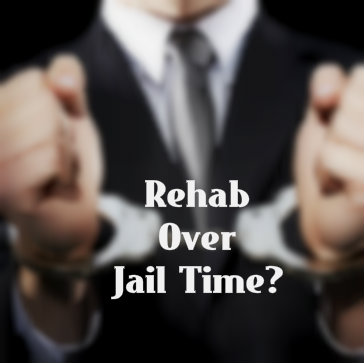 The close connection between substance problems and the chances of ending up in jail or prison is well documented. For example, figures compiled by the National Institute on Drug Abuse indicate that roughly 50 percent to 66 percent of the people incarcerated in a state jail or prison, or in a federal facility, have symptoms that could qualify them for an official diagnosis of alcohol use disorder (alcohol abuse or alcoholism). In addition, figures compiled for the year 2012 by the Substance Abuse and Mental Health Services Administration indicate that just over 25 percent of U.S. adults recently paroled from prison or under supervised prison release currently abuse either marijuana or some sort of prescription medication. Furthermore, well over a quarter (30.2 percent) of all U.S. adults who receive probation for criminal activity abuse marijuana or a prescription medication.
The close connection between substance problems and the chances of ending up in jail or prison is well documented. For example, figures compiled by the National Institute on Drug Abuse indicate that roughly 50 percent to 66 percent of the people incarcerated in a state jail or prison, or in a federal facility, have symptoms that could qualify them for an official diagnosis of alcohol use disorder (alcohol abuse or alcoholism). In addition, figures compiled for the year 2012 by the Substance Abuse and Mental Health Services Administration indicate that just over 25 percent of U.S. adults recently paroled from prison or under supervised prison release currently abuse either marijuana or some sort of prescription medication. Furthermore, well over a quarter (30.2 percent) of all U.S. adults who receive probation for criminal activity abuse marijuana or a prescription medication.
Medical Benefits Of Addiction Treatment
More than four out of five people in jail or prison with diagnosable substance problems don’t receive treatment for those problems while incarcerated. This means that the vast majority of affected individuals finish their sentences with their abuse or addiction issues intact. Statistically speaking, these individuals have an unusually high chance of committing more crimes, whether in direct support of their substance use or for other purposes. Current evidence strongly supports the usefulness of substance treatment for incarcerated men and women. Specific treatment approaches that produce positive results include both the use of substance-specific medications and the use of substance-specific counseling or behavioral therapy. Treatment settings that produce positive results include long-term residential communities called therapeutic communities (which work both inside and outside of a daily prison environment), the use of specialized courts that mandate both treatment participation and consequences for criminal activity, and the use of a specific form of case management called TASC (Treatment Accountability for Safer Communities).
Is Drug Treatment Cost-Effective?
The 2014 report from the National Institute on Drug Abuse details the results of a 2013 study published in the American Journal of Public Health by researchers from the University of California, Los Angeles. These researchers analyzed the financial impact of a California law, called the Substance Abuse and Crime Prevention Act of 2000, which mandated that people with little or no history of involvement with the criminal justice system receive parole for certain drug-related activities if they agreed to attend a suitable form of substance treatment.
The researchers gathered financial data from 42,000 active cases between the middle of 2001 and the middle of 2002 and compared that information with financial data from 47,000 active cases between the middle of 1997 and the middle of 1998. All of the people in the first group qualified for treatment under the Substance Abuse and Crime Prevention Act; all of the people in the second group would have qualified for treatment under that law had it existed at the time. After calculating all of the costs involved, the researchers concluded that treatment of offenders dealing with serious substance-related issues saved California an average of $2,300 per person. This equated to a total savings of roughly $100 million in a single year. Most of the savings came from reduced costs to the California prison system stemming from the need to house fewer individuals.
Despite the savings produced by treating first- and second-time offenders affected by substance issues, California stopped providing funding for enforcement of the Substance Abuse and Crime Prevention Act after 10 years. The authors of the study published in the American Journal of Public Health note that financial costs for dealing with the community-wide effects of substance-using criminal offenders are steadily trending upward. They also note the usefulness of programs such as the one employed in California throughout the first decade of the 2000s. This usefulness includes both economic savings and the achievement of substance treatment results for criminal offenders that match up well with the results gained by people not involved with the criminal justice system.
Texting is quickly replacing phone calls. Now the Drug Enforcement Administration (DEA) has decided to turn the texting craze into the latest weapon in the DEA’s fight against prescription drug abuse.
The administration has developed a new initiative called TIP411 which launched in late February in the state of Georgia. Anyone in the public who observes suspicious behavior, especially those who work in pharmacies, can now text a message to TIP411 (847-411) along with the phrase PILLTIP to alert DEA agents.
The Need For Better Prescription Drug Monitoring
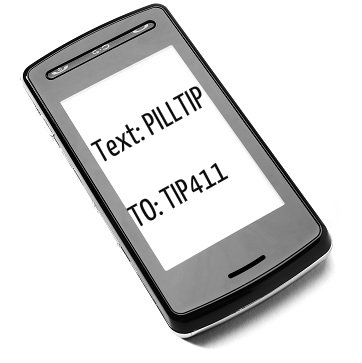 The U.S. Centers for Disease Control and Prevention (CDC) report that prescription drugs are largely behind a tripling of overdose rates in the nation since 1990. In 2008 more Americans died from taking prescription pain relievers (usually opioids) than those who died because of heroin or cocaine use. The glut of prescription drugs, and opioid pain relievers in particular, has almost certainly exacerbated the problem. According to the CDC since 1999 there has been a 300 percent rise in the sale of these potent drugs. Having so many pills out there among the public makes it all-too-easy for abuse to take hold.
The U.S. Centers for Disease Control and Prevention (CDC) report that prescription drugs are largely behind a tripling of overdose rates in the nation since 1990. In 2008 more Americans died from taking prescription pain relievers (usually opioids) than those who died because of heroin or cocaine use. The glut of prescription drugs, and opioid pain relievers in particular, has almost certainly exacerbated the problem. According to the CDC since 1999 there has been a 300 percent rise in the sale of these potent drugs. Having so many pills out there among the public makes it all-too-easy for abuse to take hold.
Most often, people obtain the drugs simply by raiding the family medicine shelf. Others buy them from friends who had a legitimate prescription from their doctor. The 2010 National Survey on Drug Use and Health found that just 2.3 percent of prescription drug abusers get their drugs from a stranger or the local drug dealer.
Eventually legitimate prescriptions run out and addicts must find another source. Sometimes prescriptions are forged, complete with fake callback numbers. Other times they doctor shop, which entails making appointments with several physicians and describing symptoms at each office in search of multiple prescriptions for painkillers. When all of these sources fail users frequently turn to heroin, which is in the same drug family as prescription opioids.
In conjunction with the launch of the text tip line, the DEA also mailed out printed materials to 1,200 Atlanta pharmacies. The materials tell pharmacy employees and pharmacists what signs to look for and how to use the tip line.
Pharmacists and employees are told to be aware of how often people refill their prescriptions. They are also warned to be suspicious when a person is holding a prescription for both a depressant and for a stimulant. Handwriting that’s too legible is another red flag.
Can The Text Line Be Fraudulently Used To Obtain Drugs?
There have been instances when users call the pharmacy impersonating a physician. However, opioids require the doctor to give his or her personal drug number proving they are licensed to dispense drugs. And some drugs cannot be prescribed over the phone. Attempts to phone in prescriptions without a proper drug number, or asking for written-prescription-only meds, should sound a warning bell.
In some cases an hourly employee at the pharmacy may be driving a luxury vehicle or taking exotic vacations. This should spark interest. On the other hand, pharmacists themselves have been known to hand out drugs in exchange for sexual favors. The DEA hopes that inviting hens to keep an eye on the hen house will yield some useful information.
While Georgia is one of the first areas in the country to implement TIP411, a similar program is being tested in Philadelphia. Wherever it is used, DEA agents say they don’t expect to get a large number of tips, but they’re hopeful that what does come through will prove fruitful.
Millions of cigarette smokers across the U.S. are addicted to nicotine, a natural ingredient in tobacco capable of producing harmful, long-term changes in brain chemistry just like a range of other legal and illegal substances of abuse. In most cases, people who attempt to quit smoking do so without the help of an addiction specialist or any other health professional prepared to deal with nicotine addiction. In a study published in March 2014 in the journal Addiction, a team of British and Dutch researchers assessed the likelihood that smokers addicted to nicotine will successfully quit using cigarettes without professional help.
The Basics Of Nicotine Addiction
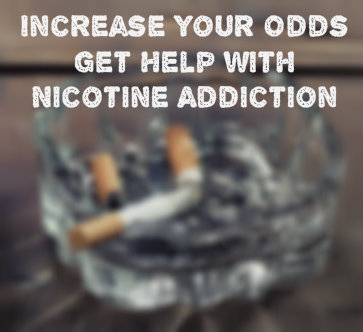 Nicotine addiction is related to a nicotine-induced chemical imbalance in the area of the brain responsible for producing pleasurable responses to various activities. This imbalance activates the pleasure center and gives a smoker an incentive to introduce nicotine into the brain again and again over time. This incentive is heightened by the fact that any single episode of nicotine exposure only briefly produces its pleasurable effects. Over 40 million American adults smoke cigarettes; since most habitual smokers are nicotine addicts, nicotine addiction constitutes the most widespread form of substance addiction in the U.S. More than two-thirds of the people who smoke cigarettes want to quit, according to figures compiled by the federal Centers for Disease Control and Prevention.
Nicotine addiction is related to a nicotine-induced chemical imbalance in the area of the brain responsible for producing pleasurable responses to various activities. This imbalance activates the pleasure center and gives a smoker an incentive to introduce nicotine into the brain again and again over time. This incentive is heightened by the fact that any single episode of nicotine exposure only briefly produces its pleasurable effects. Over 40 million American adults smoke cigarettes; since most habitual smokers are nicotine addicts, nicotine addiction constitutes the most widespread form of substance addiction in the U.S. More than two-thirds of the people who smoke cigarettes want to quit, according to figures compiled by the federal Centers for Disease Control and Prevention.
Smoking Cessation Techniques
The main smoking cessation technique available to a cigarette user who does not seek professional assistance is non-prescription nicotine replacement therapy. This approach relies on the use of over-the-counter nicotine-containing gum, lozenges or patches to gradually reduce an individual’s dependence on nicotine and help him or her avoid the unpleasant symptoms of nicotine withdrawal (which commonly act as a strong deterrent to smoking cessation efforts). Techniques used under the guidance of an addiction specialist or some other form of health professional include prescription nicotine replacement therapy (nasal sprays, inhalers or patches) and prescription nicotine-free medications such as varenicline (Chantix) or buproprion (Zyban), as well as forms of counseling that include short training and motivational sessions called brief interventions, longer group or individualized counseling sessions, remote counseling sessions that rely on phone or Internet technology and a form of in-person practical training called behavioral therapy. As a rule, a combination of professionally administered medication and counseling produces results that are superior to an all-medication or an all-counseling approach.
Chances Of Quitting Success
In the study published in Addiction, researchers from University College London and the Maastricht University Medical Centre used information gathered from a large-scale survey project called the Smoking Toolkit Study to compare the chances of smoking cessation success among people who make their own efforts to the chances of success among people who seek professional help. All told, data was collected from 10,335 smoking adults in England who had tried to stop using cigarettes one time or more in the year prior to the survey. The researchers broke these individuals down into four groups: people who received both professionally administered counseling and medication while trying to quit, people who only received professionally administered medication while trying to quit, people who tried to quit on their own with non-prescription nicotine replacement products and people who tried to quit on their own without using non-prescription nicotine replacement.
The researchers concluded that, compared to smokers who try to quit on their own without nicotine replacement products, smokers who try to quit while receiving professionally administered counseling and medication successfully stop smoking more than three times as often. Smokers who try to quit while only receiving prescription medication successfully stop smoking over 1.5 times more often than smokers who quit on their own without nicotine replacement products. Smokers who quit while only using non-prescription nicotine replacement successfully stop smoking about 0.96 times more often than those individuals who try to stop without any form of non-prescription medication or professional help.
The authors of the study published in Addiction note that, while there is some difference in the rates of smoking cessation success for people who only use over-the-counter nicotine replacement and people who use no assistance at all, the results in these two groups are close enough to qualify as “similar.” In contrast, people who receive a combination of counseling and prescription medication or just prescription medication clearly have improved odds of successfully quitting smoking.
Social media has revolutionized the way we communicate, but can it be used to pick out at-risk areas for drug abuse, risky behaviors and HIV? According to a new study, the answer may well be yes. There are limitations to the approach, but our penchant for broadcasting our thoughts, intended actions and feelings through publicly accessible sites like Twitter could provide a pre-emptive warning about areas particularly at risk for a wide range of health issues. In the past, the approach has been suggested as a method of predicting influenza outbreaks, but the new study suggests that a spike in the number of people using key phrases like “get high” or “sex” in a particular area may be used to determine where to target public health programs relating to drug use and HIV.
The study comes from a new center at UCLA intended as a multi-disciplinary effort to investigate the potential of social media and cell phones to enable prediction (and hopefully the changing) of behavior in the population. The new piece of research is primarily focused on the prevention of HIV, but one of the key ideas the research was based on is the link between risk behaviors like sex or drug use and how they spread. The methodology of the study was fairly straightforward: collect a lot of tweets, use an algorithm to search for words and phrases indicating risky behavior and drug use (with a focus primarily on stimulant use) and plot them on a map. The finalized map was then compared to HIV data to see if the prime areas of suggestive tweeting correlated with the prevalence of HIV. In total, the researchers collected over 550 million tweets from May to December 2012, and compared the final map to an interactive map of HIV prevalence in the US. However, the most up-to-date information available when the researchers were conducting the study was from 2009.
Does Twitter Work For Tracking?
 The sample they analyzed contained over 8,500 tweets relating to sexual behavior and over 1,300 suggesting stimulant use. By state, California, Texas, New York and Florida had the biggest proportion of suggestive tweets, but the main hotspots identified in terms of the raw number of tweets identified were the District of Columbia, Delaware, Louisiana and South Carolina. The largest per-capita rates (taking state populations into account) were found in Utah, North Dakota and Nevada. However, for the purposes of the analysis, the focus was on the location of tweets in terms of counties, since state-level data wouldn’t offer much potential for a truly targeted approach.
The sample they analyzed contained over 8,500 tweets relating to sexual behavior and over 1,300 suggesting stimulant use. By state, California, Texas, New York and Florida had the biggest proportion of suggestive tweets, but the main hotspots identified in terms of the raw number of tweets identified were the District of Columbia, Delaware, Louisiana and South Carolina. The largest per-capita rates (taking state populations into account) were found in Utah, North Dakota and Nevada. However, for the purposes of the analysis, the focus was on the location of tweets in terms of counties, since state-level data wouldn’t offer much potential for a truly targeted approach.
The researchers then compared their findings to the data on HIV prevalence, and found a statistically significant relationship between the locations with the most risk-related tweets and reported cases of HIV. Although this is very encouraging, a big issue with the study is that the HIV data came from 2009, three years before the tweets were collected. While it stands to reason that the areas with the largest numbers of risk-related tweets would be those with the greatest prevalence of HIV, the problem of old data does hold back the implications of this research. If the prevalence of HIV didn’t change much over the intervening three years, then the study shows a correlation, but it doesn’t necessarily mean it’s possible to predict an outbreak.
Social Media Strategy In The Future
The biggest problem with the approach from the new study is getting up-to-date information about HIV prevalence, or indeed that of any condition or issue being monitored. The researchers suggest that for the approach to work there would need to be some form of “gold standard” for regularly updated information, and this is well within the realm of possibility. If a similar study conducted with up-to-date data comes up with comparable findings, there will undoubtedly be more incentive to invest money in the approach.
The other issue with the potential for applying this approach on a larger scale is the sheer volume of data required. The research used over half a billion tweets for a period of six months, and each one had to be checked using the algorithm to produce the final data. It’s called “big data” for obvious reasons, but it’s becoming increasingly important because we can theoretically collect and use this much information for the purposes of monitoring potential disease outbreaks. Studies like this show that it’s possible, but whether we’re really ready to start monitoring huge volumes of data like this all the time and for myriad purposes is another matter entirely.
Prospective Prevention Of Drug Addiction
If we set aside the organizational and logistical challenges presented by this approach—since it will be feasible in the near future—it could have profound consequences for how we target treatment, education and prevention programs for drug addiction. It’s been suggested as a method to help prevent the use of Adderall as a “study drug,” and if applied as a more wide-ranging strategy, it could help us identify areas where drug use is burgeoning. Effectively, it presents the very real possibility for the widespread prevention of drug addiction, not just the treatment of it.
Read How To Determine If you Have A Social Media Addiction
22 Apr 2014
Repairing Broken Relationships While In Rehab
You have finally made the decision to get into rehab and get help for your addiction. Your habit has probably wreaked a lot of havoc in your life. You may have chronic health problems, your finances may be in the toilet, you may have lost your job, or you may have gotten into legal trouble. Perhaps the worst casualties of your addiction, however, are your relationships. Addicts often hurt the ones they love while focused solely on the needs dictated by their disease. Now that you’re going into rehab, should you work on those relationships or focus on your recovery alone?
What Are the Most Important Relationships In Rehab?
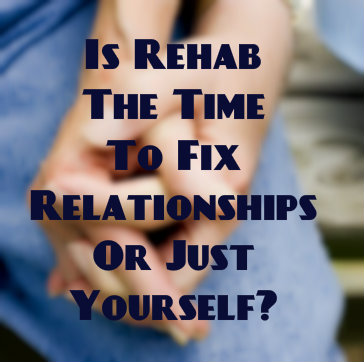 As you enter rehab you will find that there are several relationships to cultivate. You will need to develop a working and trusting relationship with your counselor or therapist. This person will be instrumental in helping you to get better. You do need to work on this relationship, but remember that it is a professional one. If you struggle to trust this person, be honest about it. Your therapist will not take it personally if you want to request to work with someone else.
As you enter rehab you will find that there are several relationships to cultivate. You will need to develop a working and trusting relationship with your counselor or therapist. This person will be instrumental in helping you to get better. You do need to work on this relationship, but remember that it is a professional one. If you struggle to trust this person, be honest about it. Your therapist will not take it personally if you want to request to work with someone else.
You will also find that you will develop several relationships with peers while in rehab. These are crucial to your success. No one can go it alone, especially when trying to overcome addiction. Your peers have the unique perspective that you also have. They understand where you have been, where you’re going, and what your experience in rehab is like. While leaving romance out of the picture, which can complicate things, cultivate relationships with these people who will be able to support you during rehab and for years to come.
Can I Work On Repairing Relationships In Rehab?
In addition to the professional and peer relationships that you develop in rehab, you will also begin to forge a relationship with yourself. You will begin to learn more about your motivations for abusing substances, why you were susceptible to addiction, and how you can stay sober. This is essential to your recovery, and should be your main focus.
Although you are focusing on yourself, you may still be able to work on the relationships you damaged with your addiction. Consult your therapist to decide whether it is best for you to wait or to delve into that project while in rehab. If you both think you can handle getting to work on relationships, your therapist may want to set up family sessions. Together you can work toward regaining the trust of your loved ones and they can start to forgive you.
What If I Wait Until After Rehab To Fix Relationships?
If you and your therapist feel you need to focus solely on yourself during rehab, bring in your loved ones so that your therapist can explain the decision. They may feel hurt initially and wonder when it will be their turn. Your therapist can help them to understand the importance of devoting rehab time to your immediate needs.
Another option is for your loved ones to begin their own therapy sessions. The impacts of your addiction have probably hurt them, caused them to feel angry and used, or even traumatized them if abuse was involved. If your loved ones can begin to work with a therapist while you go through rehab, you will all be on the right track toward repairing your relationships together.
21 Apr 2014
What Are The Marijuana Regulations In Colorado?
In the November 2013 elections, Colorado voted to legalize recreational marijuana sales, and the first stores licensed to sell marijuana opened for business Jan. 1. Nevertheless, Colorado’s new laws do not mean that marijuana use is now free from regulation. On the contrary — the process of selling, purchasing and using marijuana is tightly controlled, especially as the state evaluates the manageability and success of legalization.
Selling And Purchasing Marijuana
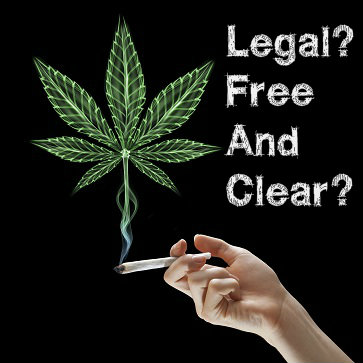 In addition to applying for and receiving an official license to sell recreational marijuana, there are other regulations by which retail locations have to abide. The state has mandated that marijuana retailers cannot open earlier than 8 a.m., or remain open after midnight. Many cities are setting even more restrictive hours; for example, Denver stores that sell recreational marijuana are required to close at 7 p.m.
In addition to applying for and receiving an official license to sell recreational marijuana, there are other regulations by which retail locations have to abide. The state has mandated that marijuana retailers cannot open earlier than 8 a.m., or remain open after midnight. Many cities are setting even more restrictive hours; for example, Denver stores that sell recreational marijuana are required to close at 7 p.m.
These stores also have to abide by security camera regulations. Each location is required to have a security camera pointed at the register with a picture that is clear and close enough for facial recognition.
Marijuana retailers are required to check the state-issued I.D. of customers to confirm their state of residence. They may sell up to one ounce of marijuana to Colorado residents, and one-quarter ounce to out-of-state residents.
State law does not permit any private individual to possess more than one ounce of store-bought recreational marijuana at a time. However, there are no regulations in place that prohibit people from purchasing marijuana from multiple stores in one day. One of the biggest concerns for law enforcement officers is how to prevent people from acquiring much more than the legal limit by visiting multiple stores and purchasing the full legal amount each time. This is part of the reason that stores are required to have security cameras through which individuals can be clearly identified.
The regulations about where customers are permitted to use their products are also fairly restrictive, and a bit confusing. Smoking marijuana is forbidden wherever cigarette smoking is banned, and any consumption of marijuana is forbidden in public areas like parks. Hotels and apartments are permitted to allow or ban smoking marijuana just as they can regulate cigarette smoking. Currently, it’s not clear whether private establishments like restaurants or coffee shops will be allowed to have discreet areas for marijuana use.
Consuming marijuana on federal land within Colorado is also forbidden. This includes most ski slopes, and all national parks and national forests. People who decide that these wide-open spaces seem ideal for discreetly consuming marijuana products should be aware that they would be subject to federal penalties if they were caught.
For the moment, privately owned residences in Colorado are the only places where recreational marijuana use is definitely permitted.
Some Cities Refuse To License Marijuana Sales
Under the new state regulations governing recreational marijuana, individual communities (cities and counties) in Colorado are allowed to refuse to license marijuana dealers and therefore prohibit recreational marijuana sales within their city or county limits.
Cities that have chosen to ban recreational marijuana sales include Colorado Springs, the state’s second largest city. Several other major cities, including Aurora and Boulder, are provisionally banning marijuana sales until local leaders make decisions about licensing regulations and monitoring. Many of these communities feel that the weeks between the November 2013 elections and the official start of marijuana sales on the first day of 2014 did not give them enough time to make decisions about intelligent implementation.
Some cities have not explicitly banned marijuana sales, but have created regulations that make it practically impossible for marijuana retailers to open. For example, at least one community requires prospective marijuana retailers to be so far away from any school property that they would be pushed to the very edges of town, where a new business would almost certainly fail.
Some of the approximately two-dozen cities that do not currently permit recreational marijuana sales have issued two-year moratoriums, and will reconsider the issue when those two years are up. Many of these communities want to wait to see how effective the state can be at regulating, licensing and monitoring establishments before potentially giving the go-ahead to marijuana sales.
Buprenorphine is an opioid medication approved in the early 2000s as a treatment for people addicted to both legal and illegal opioid substances. This medication has a proven record of effectiveness, but current evidence indicates that doctors don’t often prescribe it to their opioid-affected patients. In a study published in March 2014 in the journal Substance Abuse, researchers from five U.S. institutions sought to determine how many people that use/abuse an IV (intravenous) opioid drug are aware of buprenorphine as a treatment option. These researchers also assessed IV opioid users’ willingness to participate in buprenorphine-based treatment.
What Is Buprenorphine?
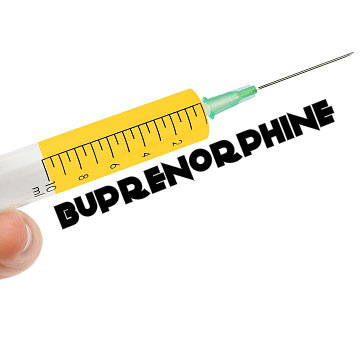 It might seem strange that a doctor would prescribe an opioid medication to help a person affected by opioid addiction; however, buprenorphine does not produce its effects as rapidly as heroin or other commonly abused opioids (or the opioid medication methadone); in addition, the medication has a relatively low maximum level of effect, and people who keep using it after reaching this level will not get any more “high.” In combination, these qualities make buprenorphine suitable as either a short-term or long-term option for people addicted to stronger opioids that enter treatment. Essentially, use of the medication makes it possible for recovering addicts to avoid uncontrolled substance intake while simultaneously avoiding the highly distressing symptoms of complete opioid withdrawal. One commonly used prescription product, called Subutex, contains only buprenorphine. Another commonly used product, called Suboxone, contains both buprenorphine and a second medication (naloxone) that effectively decreases the risks for buprenorphine abuse.
It might seem strange that a doctor would prescribe an opioid medication to help a person affected by opioid addiction; however, buprenorphine does not produce its effects as rapidly as heroin or other commonly abused opioids (or the opioid medication methadone); in addition, the medication has a relatively low maximum level of effect, and people who keep using it after reaching this level will not get any more “high.” In combination, these qualities make buprenorphine suitable as either a short-term or long-term option for people addicted to stronger opioids that enter treatment. Essentially, use of the medication makes it possible for recovering addicts to avoid uncontrolled substance intake while simultaneously avoiding the highly distressing symptoms of complete opioid withdrawal. One commonly used prescription product, called Subutex, contains only buprenorphine. Another commonly used product, called Suboxone, contains both buprenorphine and a second medication (naloxone) that effectively decreases the risks for buprenorphine abuse.
Effectiveness And Access Of Buprenorphine
Numerous studies have verified the effectiveness of buprenorphine and buprenorphine/naloxone as treatments for opioid addiction and opioid dependence (a state of physical reliance that does not include the dysfunctional symptoms of addiction). In addition, unlike methadone, which can only be administered to patients in a fairly small number of sanctioned clinics, any doctor who obtains a mandated ID number from the U.S. Drug Enforcement Agency can prescribe buprenorphine and buprenorphine/naloxone. This means that, theoretically, people affected by opioid addiction can get buprenorphine-based treatment in a far greater number of locations than they can gain access to methadone. Thousands of doctors across the U.S. have gone through the training needed to properly prescribe buprenorphine and buprenorphine/naloxone and have also registered with the DEA.
Awareness Among IV Opioid Users
In the study published in Substance Abuse, researchers from Johns Hopkins University, the City University of New York, the Albert Einstein College of Medicine, the Montefiore Medical Center and New York Harm Reduction Educators used an examination of 158 IV opioid users in New York City to assess how many such users know about buprenorphine as a treatment option for opioid addiction. All of these users were participants in a syringe exchange program. In addition to gauging basic awareness among these individuals, the researchers used interviews to determine how many people had received some form of buprenorphine and how many people displayed a willingness to try the medication or learn more about it. The researchers also looked for any connection between established familiarity with buprenorphine and the willingness to use the medication.
All told, the researchers found that most of the study participants (70 percent) had heard about buprenorphine as a possible treatment option. Roughly one-third of the participants (32 percent) had first-hand knowledge of someone who took buprenorphine, while another third (31 percent) had second-hand knowledge of someone who took the medication. Only 12 percent of all the individuals enrolled in the study had received buprenorphine themselves. When the researchers asked the 138 participants with no personal history of buprenorphine use if they were curious about using the medication, more than half of these individuals (57 percent) replied in the affirmative. Upon further investigation, the researchers concluded that curiosity about buprenorphine use was basically limited to those participants with second-hand knowledge of the medication.
The authors of the study published in Substance Abuse note that the opioid users enrolled in their project were among those that may be overlooked by programs offering treatment for opioid addiction. Even still, most of these individuals knew about the medication and many showed a willingness to learn more about it or possibly use it as a treatment option. The study’s authors believe that public health officials should explore the interest shown by those IV opioid users with second-hand knowledge of buprenorphine as a potential inroad for eventually making active treatment with the medication more widespread.
Read More About Successful Buprenorphine/Naloxone Treatment For Opioid Addiction


